Pattern Recognition #300 - Alpha Boons
Features Opinion Pattern Recognition
berryjon
12 October 2023
246 views
12 October 2023
246 views
Hello Everyone! My name is berryjon, and I welcome you all to Pattern Recognition, TappedOut.Net's longest running article series. Also the only one. I am a well deserved Old Fogey having started the game back in 1996. My experience in both Magic and Gaming is quite extensive, and I use this series to try and bring some of that to you. I dabble in deck construction, mechanics design, Magic's story and characters, as well as more abstract concepts. Or whatever happens to catch my fancy that week. Please, feel free to talk about each week's subject in the comments section at the bottom of the page, from corrections to suggested improvements or your own anecdotes. I won't bite. :) Now, on with the show!
And welcome back to my 300'th article! Woo-hoo! Man, where does the time go when I'm having fun? Anyway, as you may have guessed by the article title, I'm actually being pretty lazy, and once again touching on the subject that I opened up the series with all those years ago.
But for all those of you in my audience who weren't there at the beginning, The Alpha Boons are a colloquial term to describe a theoretically horizontal cycle from the very first set - Limited Edition Alpha - and its initial reprints. I say theoretical because unlike modern cycles that actually have a care to be more balanced and equal, one of the cards in this set is a Rare, and not a Common.
The Alpha Boons all share three similar traits. And while even back then, you can say that cards across the set did similar things, or had similar aspects to them due to the simple nature of building a set in those days, what sets the Alpha Boons apart is that it was more deliberately designed this way, rather than a as result of convergent design evolution of "everyone gets the same effect for themselves".
As an example of this, the Moxen were printed in this set, a series of cost Artifacts that tapped to add one of the relevant color to the mana pool. Mox Ruby, for example. Or the Laces, a cycle of Instants that turned a spell or permanent into that color. Lifelace or Purelace as examples, with Moonlace from Time Spiral block to finish it out.
To whit, the Alpha Boots are all 1 Mana Value Instants that provide 3 of something. That's it. It's that simple, and that simplicity is what makes it work. Now, obviously these cards were not made equal in any sense. But the intent to create this as a cycle that was more divisive and unique than the other horizontal cycles of the time was real. And as I describe each of these cards, I will attempt to explain how and why this is important. So, let's begin, shall we?
The first Boon is the one, and despite my love for the color, even I have to admit that this is the weakest one by far. Gaining Three life or preventing three damage just doesn't do much for a card like this. You see, at the time, there was no ancillary support for lifegain. There was nothing as simple as Ajani's Pridemate or Cleric of Life's Blood that did something with the life you gained. And there wasn't a Test of Endurance or Felidar Sovereign to create a goal to move your life towards.
Lifegain simply mattered as a way to delay you reaching 0 life. That was it. It was purely an emergency button to hit to stop you from losing the game either now or later. And after thirty years of design evolution, that just doesn't cut it anymore.
On the flipside, you can also use it to prevent damage that was being dealt to a creature. This runs into the same issues of being a reactive one-time only Saving Grace for the creature in question, but unless you absolutely need that creature next turn, again, this is ... not worth it. Not really.
Now, Wizards did learn, and did go a few things to try and 'fix' this card, much as they tried to 'fix' the other Boons to good or bad results. They experimented with cards that were worth more, but added more life to the mix, and a quick look of such cards include Abuna's Chant (a card I never played, because it was bad), Angel's Mercy (ibid), Blessed Wine (which I will come back to), and Healing Grace or Renewed Faith or Reviving Dose.
In fact, let's step back for a second and look at that last one. One of the key underlying components to card design and mana values for Magic is that staping 'Draw a Card' onto a card should cost or . In this way, Reviving Dose is literally just that. It's Healing Salve with its most useful effect, with card draw attached to it. It was slightly improved, if you can call it that, with Ritual of Rejuvenation, but it all ran afoul of the same fundamental problems of the age. Lifegain doesn't do anything in of itself. It needs to have a purpose and an outlet.
I'm going to stop myself here, because Lifegain deserves to be its own article, and while I wrote one in the past, I've been at this for so long that perhaps I should touch that subject again with fresh minds and years of additional cards.
I think that Wizards has actually struck a good balance with their final replacement for this card. Or at least the most stable one that can be reprinted without worry. Revitalize, a card I want in Solle, but most recently printed in Kaldheim, recognizes that Reviving Dose is too expensive for what it does, despite being correct on paper, and reduces the cost to for 3 life and a Card. It works, I can attest, and playing it or putting it into my deck was never a problem for me.
But by the same token, I think there is room for improvement. And that is because, for the longest time, the successors to this card were too focused on the player, on lifegain and not general damage prevention. There were other ways to protect your creatures, from toughness imrpovements to Protection to Indestructible.
Yet, what about Planeswalkers? They have the Vorthos of another player coming to help you out for a bit, so why can't you give them a little life, or prevent some damage to them? This really is in 's wheelhouse, but before you start to giggle over the thought of spending just one to give a Planeswalker +3 at instant speed, look at what that would do for so many Walkers. In fact, straight up adding Loyalty to a Walker isn't something anyone does - unless you Proliferate. Rather, I would like to see take this concept and expand it into preventing damage to Planeswalkers as well. A variant that prevents the next three damage to any target would do a lot for 'Walkers, as people tend to be very precise in what damage they throw at them in order to maximize their damage elsewhere. Forcing a potential over-commitment is a great strategy play.
All in all, Healing Salve was a good start to the game, but it quickly lost pace as the game developed. It formed the foundational backbone of a whole slew of cards though, so while it, itself, may not be the best thing, it did its job, and did it well.
And so, without fanfare, let us come to the one card from this set that most people know about - even though it's not for any reason to do with this cycle of cards.
The one rare card of this cycle, Ancestral Recall has the honor and privilege of being enshrined for eternity in the Halls of Magic History as one of the Power Nine. For those of you new to the game, that is the term used to describe the nine most powerful cards in the game by far. 6 Artifacts and three Blue spells, all printed in Alpha. And I could say that this is probably the least powerful of them.
I'm sure some of you will disagree, but save that discussion for when I talk about the P9 themselves. This is about the Alpha Boons instead, and this card is the most powerful of them all.
Anyways, like the other Boons, Recall has a very simple effect. In this case, it's just card draw.
Just. Card. Draw.
To help put this into context, I peripherally involved in a discussion on Discord a couple weeks ago, where someone had just discovered Necropotence for the first time. And as part of that discussion, one of the people pointed out that the strength of that card lay in the very poorly thought out equation that ones life total was equivalent to card draw that was more prevalent at the time. A point I had contention with because I remembered Necro/Black Summer, where this card dominated.
No, not anywhere near correct, and Wizards knew this back when the card was first printed. That's why it was a Rare, and unlike literally every other card in this cycle, it never got properly reprinted. In fact, I recall Mark Rosewater being asked that if Healing Salve were to be reprinted at Ancestral Recall's power level, how much life would it give? MaRo's answer was "Somewhere between 100 and Infinite".
Magic is a game of resources, and the more you have of a limited resource, the better off you are. Cards in hand is one of those important limiting factors (which makes me annoyed when we get more cards that turn the Graveyard into an extension of the hand), and the rate at which you refill your hand is an important aspect to deck design and how you play through your hand and your deck.
Ancestral Recall takes that limitation out back and shoots it. In a hand size of 7, being able to spend and get three (well, two) more cards in hand at Instant speed is an advantage that cannot be understated. The improvements in options available for such a low cost is a massive advantage both in terms of mana efficiency as well as opportunity costs. In fact, in modern Magic design, this card would have a cost of for two cards, for the third card drawn, then to make it instant speed - Jace's Ingenuity. or Concentrate for Sorcery speed.
For thirty years, card draw has been king of the game. And Ancestral Recall has been the best it has ever gotten. While it has received numerous nods and references over the years - Ancestral Memories is the one nearest and dearest to my heart - this card has never and will never be seen again, unlike all the others where Wizards is at least willing to try and modify them to fix them. And fixes to this card would make it beyond recognizable, it's that unsustainable.
Truly, Power Nine.
The third example of the Alpha Boons is also, in its own way, the odd card out of the set. Of all five cards, it is the one whose effect is no longer considered to be part of that colour's portion of the mana pool, and yet the legacy of this card still lives on to this day.
Dark Ritual is the namesake card for any Instant or Sorcery that adds mana to your mana pool, and has been one of those options in the back pocket of Wizards over the years when they need some quick mana, and need just a single shot of it for whatever reason.
Dark Ritual existed in a very particular confluence of design choices and decisions in the early stages of the game. It was a decision that I feel was out of place for the time, but in the end, was still a necessary first step, where later steps have led to a more healthy game environment.
You see, in the interesting old days of yore, being Enemy Colours actually meant something, and that tended to be resolved with mirrored effects, or direct attacks on the other colors. I point to the classic oppositions of and , with later cards like White Knight and Black Knight. In this case, and also had their oppositions. Yet, these two colours didn't (at the time) have much in the way of common ground.
So let me tell you the two things that converged to create this card. is the color of sacrifice. There was nothing that it wasn't willing to give up in the name of power and victory. Other creatures? Absolutely. Life totals? Well, the only point of matters is the last one, so throw it away for an advantage! was the color of sacrifice, and I need you to hold this thought as I go to the other side of this equation.
For , mana acceleration is one of their key, fundamental components. Being ahead of everyone else in terms of mana production is baked so hard into the game, that multiple cards from the first set alone did it for them, from Llanowar Elves to Birds of Paradise to Wild Growth.
And so, with these two thoughts in your hand, consider how these two might be melded together using 's theme of sacrifice when combined with the desire to have a counterpoint to 's mana acceleration? Well, if your answer is Basal Thrull, congratulations, you are a Magic Player from the 90's, and I salute you! You may collect your Old Fogey Card on the way out.
No, the answer is Dark Ritual itself. You see, in a certain degree of abstract thought, the sacrifice for casting the Ritual is the card itself. You were giving up a land, or some other thing that might be useful later in favor of a shot of power now with which to gain an advantage over everyone else. Who cares about tomorrow? That's a later problem, and you want problems for your opponents now.
But try as they might, this sort of idea never really fit into how the colour developed. Oh, to be sure, they tried to make it work for the longest time, years even, but the ability just never really gelled with the rest of , especially as they started to claw back the more aggressive sacrifice effects and rebalance the colour. It just sort of faded away into history.
Then got their hands on it, and it made sense. Seething Song, in addition to costing more and providing more than the DarkRit itself, it actually fit more into the methodology of than in . While the later saw the ritual as a sacrifice for power, the former instead viewed it as a burst of resources. You weren't giving up anything, you were adding to what you already had for a temporary shot in the arm. Then, with the introduction of Reckless Impuslse and other cards like it, the combination of temporary mana and temporary cards became an important part of 's arsenal. Just look at Chandra, Dressed to Kill. Temporary Mana. Temporary cards. All advantage.
In the end, the existence of Dark Ritual helped pave the way for proper color shifts in the future as it moved around the colour pie, thankfully skipping in the process. Can you imagine if that colour got this? I can, and it ain't pretty. But regardless, let us give thanks to Dark Ritual for paving the way to a better future, even if that first step was a mistake in the view of history.
This next card requires no introduction, I would think. Yet, introduce it, I must. What you are about to see is the most well known of this cycle. It is the backbone of an entire Deck Archetype that has existed since the first pack was cracked and goes on to this day. Unlike all the others, its imitators are without end, and its pure presence is enough to cause formats to bend around it.
This card is perhaps one of the most pure and simple designs in the game. It makes no bones about what it does, or how it does it. Let this card be a lesson to you all, complexity does not equal power. Power lies in a cards usefulness in a wide variety of situations, and Lightning Bolt delivers everything it promises and nothing less.
Bolt is one of Magic's most Iconic cards. To the point where if you were running in your deck, and if it was available and you weren't running 4 Bolts, you didn't physically have four of them. This card defined the early Red Deck Wins decks, then known as Sligh decks. It can also destroy, on sight, 10,266 creatures out of 14,507 creatures currently in the game at the time of this writing. That's right, 3/5 of the creatures in the game are vulnerable to this card.
Lightning Bolt is extremely good. In fact, it's almost too good. It's one of those cards that Wizards recognizes that putting into a format either through reprints or by creating a format in which a printing would be legal, bends the format around it. It doesn't break anything. But its presence creates a sort of binary dichotomy in terms of creature and even Planeswalker options because you have to ask yourself - is it worth it to include this card if it dies on the spot before you can get any real use out of it that isn't an ETB/LTB effect?
This is where the infamous phrase "Bolt the Bird" comes from. Birds of Paradise was considered an extremely powerful card thanks to the ability to provide any colour of mana, and taking it out with a Bolt was considered a good choice for the player with the Bolt. It got to the point where players would play the bird, just to draw out the Bolt in response, and move on with their gameplan intact.
And because of this, Wizards has made many, many, MANY attempts at creating Bolt variants that are always worse in some way, but always edging closer to being close enough to be a reliable card they can reprint without fear. It's telling to me that much like how [[Counterspell] was judged to be too good for its cost, but Cancel was too expensive for the same effect, that Bolt is too much damage for its cost, while Shock is too little, and Lightning Strike is just a tad too expensive on the whole. I could sit here all day and list various burn spells and how they are worse than Lightning Bolt, but then that would again, keep us here all day.
But unlike 's Ancestral Recall, which represents a card so good it breaks the game, Lightning Bolt represents a card that is so good that it can't be beat. Not can't as in you can't improve on it. I'm sure Wizards could totally print a Super Lightning Bolt that deals 5 damage to any target for . But that's not the point. No, Bolt can't be beat because it represents the upper limit in damage efficiency that comes from a Red Burn Spell. It's optimally maximal, to mix phrases here, and any sort of improvement is too good, meaning that everything has to be worse in order to generate a more fun pay experience for all involved.
It's an example of good card design because it places a limit on other burn spells. It's an example of bad card design because it places a limit on creatures, Planeswalkers and Battles.
It's glorious, and I wouldn't change it for the world.
Last, but not least, is perfection.
I mean it. This is the old card of the Alpha Boons that works, and still works to this day. Giant Growth forms a perfect trifecta with two other cards in this cycle - quite deliberately, I might add, being a counterbalance to both Healing Salve and Lightning Bolt. These three cards allow any creature affected by any two to survive combat against each other, or to survive being hit by a Bolt directly. And that degree of survivorship simply became second nature to this colour. Getting bigger? Absolutely on point.
Now, I given that I've just sung Bolt's praises, I have to offer equal respect to Salve and Giant Growth for being able to counter it. Of course, if their response to a threat is to Bolt it, and you respond with a Growth, well, that's an extra 3 power on the board as well, meaning they're down a piece of removal and you've got something larger to swing with very shortly.
Being bigger enables so many things, from the obvious and often repeated ability to deal and receive more damage, but also to enable ancillary effects. Take, for example, Challenger Troll. This card gives anti-Menace to all your creatures with power 4 or more, yet what if you're planning on attacking with a creature you don't want to lose, but has power less than 4 for whatever reasons? Just pump it up and get those added benefits!
And just like Bolt, Growth is extremely simple to use and understand. Power and Toughness are right there, meaning that I can use this card as a teaching tool to demonstrate Instants, timing, and modifying a permanent on a temporary basis.
So again, for all of you out there planing on making cards, remember that power and complexity are not equal.
But the best part is that, while like everything else, it's an easy card to splash into a deck, requiring only one color pip. This may not seem like much, but consider how many decks deal in creatures, and how much removal - and especially, but dips into it as well - target toughness, rather than just outright removal. And a creature that has neutralized by putting it into Witness Protection, so you swing with it? It's a joke. Why block it, kill it and allow you to get it back? Well, now it's a 4/4, and they've just taken a hit to the face they shouldn't have.
And if you're still not convinced, consider this: Giant Growth is also the only card to still see print in Standard sets (remember those?), as it was last printed in The Brothers War. That was a year ago! It's legal! It's useful! It's perfectly balanced! And it will be seen again in the future, because of it.
Thank you all, this has been a wonderful 300 issues with all of you. Well, aside from the trolls, the arguments, the bad feelings and the late nights I spend trying to get these out to you on time. But it's been worth it! Really, it has.
I started this because I was unemployed, and needed something productive to do with my time while job searching, and the site's showrunners were petitioning for article series' to help put on the front page. So I wrote the first five over the course of a week, and submitted them. I was approved, and well, the rest is history.
I look forward to many more years with you all, and I'll see you all next week.
Until then please consider donating to my Pattern Recognition Patreon. Yeah, I have a job (now), but more income is always better, and I can use it to buy cards! I still have plans to do a audio Pattern Recognition at some point, or perhaps a Twitch stream. And you can bribe your way to the front of the line to have your questions, comments and observations answered!
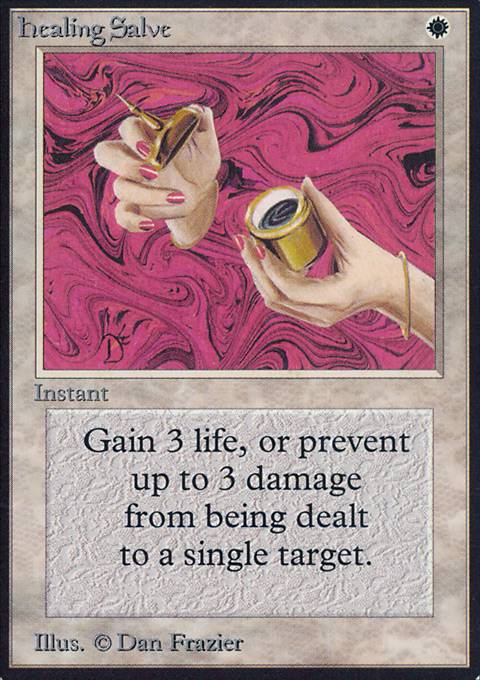
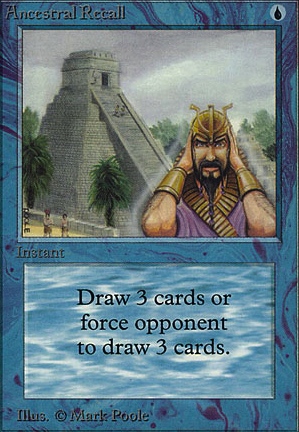
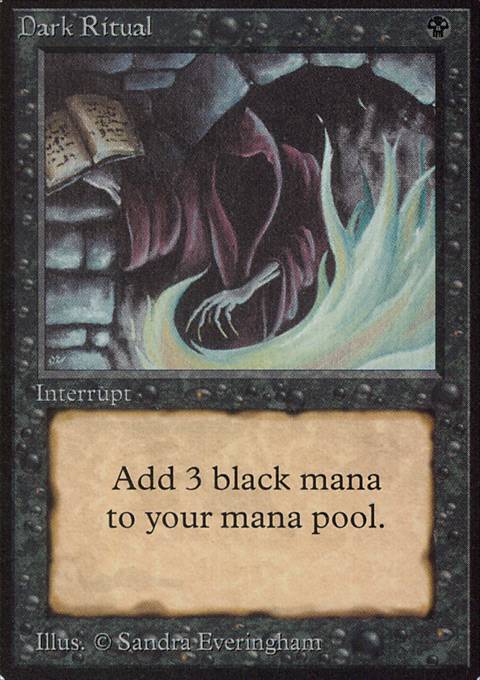
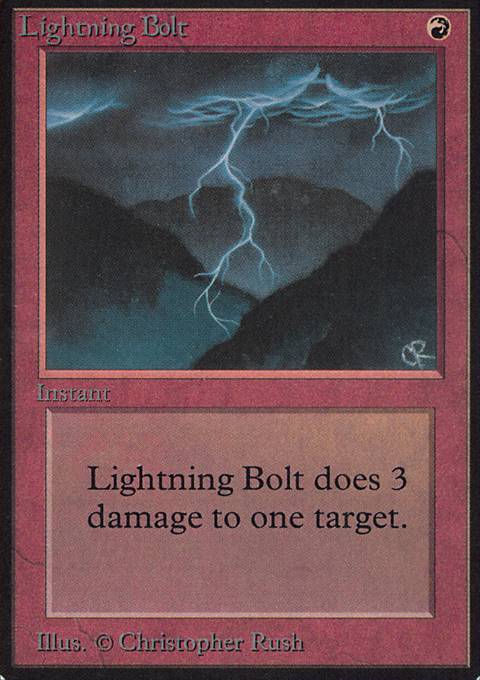
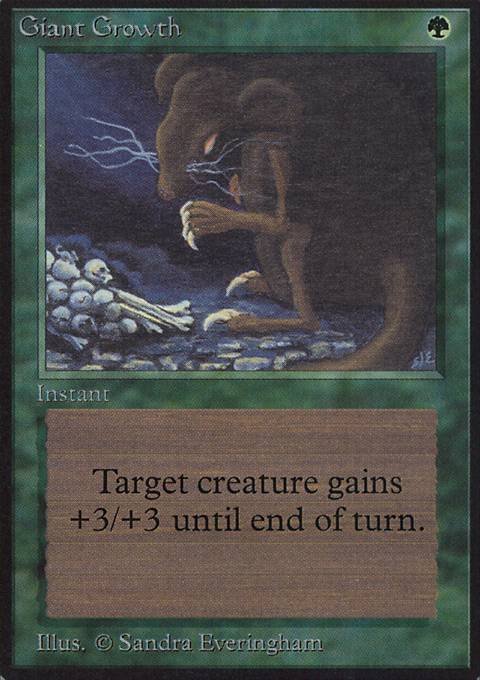
legendofa says... #1
Congratulations!
October 17, 2023 6:13 p.m.